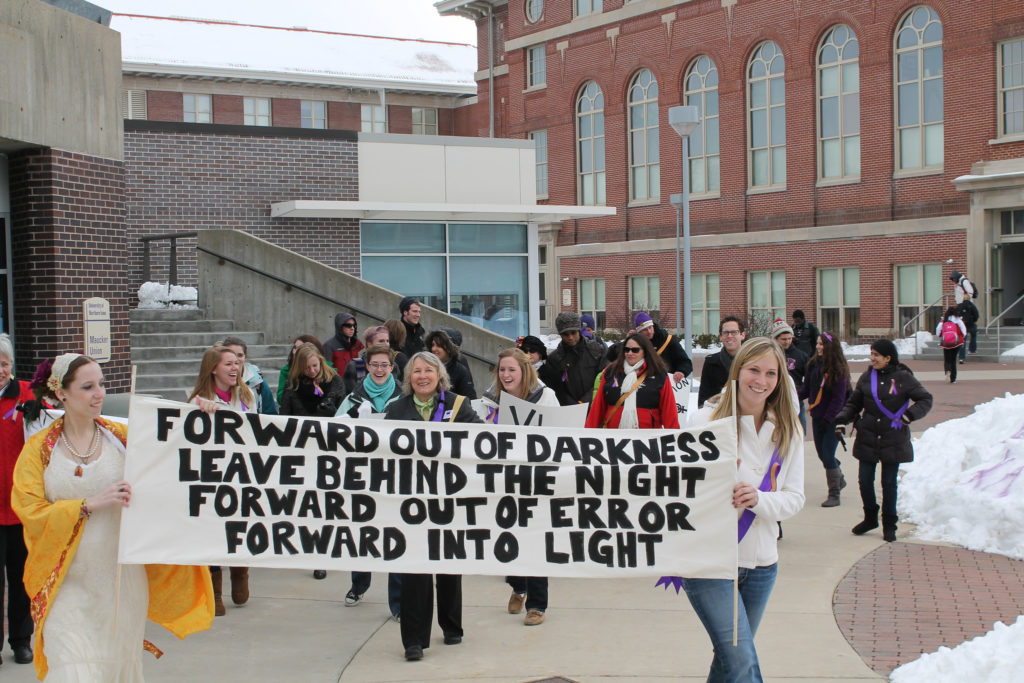Welcome to DU!
The truly grassroots left-of-center political community where regular people, not algorithms, drive the discussions and set the standards.
Join the community:
Create a free account
Support DU (and get rid of ads!):
Become a Star Member
Latest Breaking News
General Discussion
The DU Lounge
All Forums
Issue Forums
Culture Forums
Alliance Forums
Region Forums
Support Forums
Help & Search
Women's Rights & Issues
Related: About this forumTruth, Reconciliation and Reshaping Feminist History
Truth, Reconciliation and Reshaping Feminist History
At an 1848 convention in Seneca Falls, New York, women met for the first time and began asking for the right to vote. Led by Susan B. Anthony and Elizabeth Cady Stanton, they worked for 72 years until they were finally given the vote in 1920. That’s what I learned in school, and that’s what students are still learning 60 years later. There’s just one problem: Everything about this narrative is wrong.

Feminists honor the anniversary of suffrage in their state at the University of Northern Iowa. (Rod Library / Creative Commons)
History doesn’t begin with white people. Indigenous women had political voice on this land long before Columbus: The clan mothers of the six nations of the Haudenosaunee (Iroquois) confederacy, for example, have been nominating, holding in office and removing the chiefs they appoint for at least 1,000 years, and the political, social, economic and spiritual respect and mutual authority they share equally with men fired the imagination of the Founding Mothers of feminism. One rule that has always been in practice: if a chief abused a woman, his clan mother would immediately remove him from office. When ownership of property determined qualified voters during the colonial period, single and widowed women of means sometimes voted, a right women and black men lost when states wrote their constitutions after the revolution. The progressive suffragists, 100 years later, claimed they were not asking for a new right, but the restitution of the right to vote their foremothers had possessed.
These early suffragists of the National Woman Suffrage Association were not well-behaved. They refused to pay their taxes (no taxation without representation); voted illegally by the hundreds when it was against the law (Anthony was arrested as a test case); impeached the government for its treatment of women during the 1876 centennial celebration; ran a woman for President in 1884 and 1888 on the Equal Rights Party ticket (Belva Lockwood called for a “domestic insurrection”); and protested at the unveiling of the Statue of Liberty—calling it the “greatest hypocrisy of the nineteenth century” that liberty was represented as a woman in a country where no woman had political liberty. The later National Woman’s Party picketed the White House, burned the President in effigy (along with his hollow words of democracy) and, when arrested, went on hunger strikes.
The early suffragists didn’t just work for the vote. They fought for equal pay for equal work, reproductive justice and an end to sex trafficking and violence against women. They believed in the rights of the unborn, they said—and they believed that the most sacred of all those rights is the right to be wanted and chosen, not an accident or a coerced birth. Progressive women like Elizabeth Cady Stanton and Matilda Joslyn Gage contended that women needed control of their bodies to ensure the unborn’s right to a sacred birth. Those demanding women’s rights were also not just women. Rev. Samuel J. May and Frederick Douglass stood strong for the cause even before women formally organized for i, with May preaching a women’s rights sermon in 1845 and Douglass heralding in his newspaper’s 1847 masthead that “right is of no sex, truth is of no color,” putting the cause of women above his own as a formerly enslaved man.
Nor were the earliest feminists all white. Sojourner Truth, Harriet Tubman and Frederick Douglass are among the best-known non-white women’s rights activists; they were joined by Jermain Loguen, the head of the Syracuse Underground Railroad, and the poet Frances Ellen Watkins Harper. In truth, there were entire families of color shaping the movement—the three Forten sisters, Margaretta, Sarah and Harriet Forten Purvis; their Forten nieces, Charlotte Forten and Hattie Purvis and Hattie’s father, Robert; Sarah Remond and her brother Charles; the Rollin sisters, political operatives of South Carolina; Mary Ann Shadd Cary and her sister, Amelia Shadd. Robert Purvis was one of, if not the only, man who served on a committee of the NWSA, which had only female officers, and his daughter Harriet was its Vice President. It goes on and on. (And this is in just the beginning of the movement, before and after the Civil War!) But despite this, there remains a darker side of this history.
. . . . .
https://msmagazine.com/2019/03/29/truth-reconciliation-and-reshaping-feminist-history/
InfoView thread info, including edit history
TrashPut this thread in your Trash Can (My DU » Trash Can)
BookmarkAdd this thread to your Bookmarks (My DU » Bookmarks)
0 replies, 1171 views
ShareGet links to this post and/or share on social media
AlertAlert this post for a rule violation
PowersThere are no powers you can use on this post
EditCannot edit other people's posts
ReplyReply to this post
EditCannot edit other people's posts
Rec (3)
ReplyReply to this post